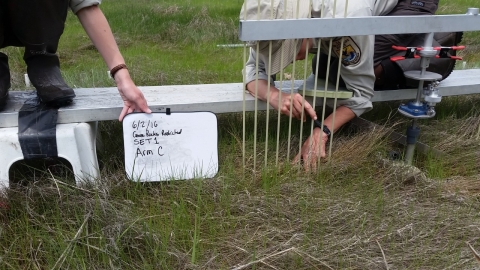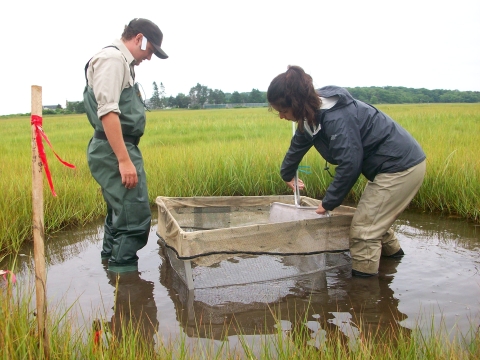Land Management Research and Demonstration (LMRD) Areas are places where new habitat management techniques and approaches are developed, implemented, and showcased—places where professional land managers and others come to learn about cutting-edge habitat techniques and technology and carry back with them the information and knowledge which allows them to better manage their own lands.
Habitat management research is a tradition on national wildlife refuge national wildlife refuge
A national wildlife refuge is typically a contiguous area of land and water managed by the U.S. Fish and Wildlife Service for the conservation and, where appropriate, restoration of fish, wildlife and plant resources and their habitats for the benefit of present and future generations of Americans.
Learn more about national wildlife refuge . Since the establishment of Pelican Island Refuge in 1903, refuge staffs have continually tested and refined management techniques. Methods such as wetland restoration, reforestation, and prescribed fire have been used and improved on at refuges for more than 100 years.
LMRDs are managed by the U.S. Fish and Wildlife Service on national wildlife refuges and wetland management districts throughout the county. They serve as institutions of investigation, innovation, and instruction in wildlife and habitat management. Rachel Carson and Parker River NWRs are partners in a Land Management Research and Demonstration Area.
The techniques used in land and habitat management are constantly changing and being fine-tuned as our knowledge of species' requirements increases and technology advances. Our sites function as premier examples of habitat-based land management; experimenting with new management techniques is essential. The techniques used at these sites must be validated and proven effective before can be fully implemented by other land managers. That is best accomplished through an active, diverse research program.
The LMRD program also seeks to bring those techniques to key audiences outside and inside the Service, through a variety of outreach methods, including tours, workshops, and collaborative research projects and publications.

